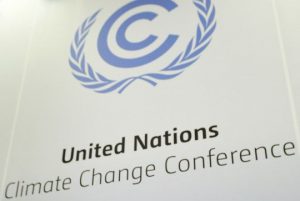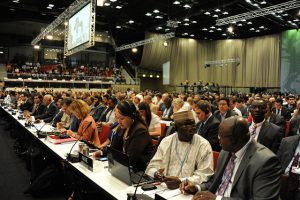The years leading up to 2020 are crucial for Latin America. Forecasts indicate that in the next five years, the region’s cities will register the highest rates of population growth in the world and the economically active population will exceed those not of working age, according to research by the Woodrow Wilson Center.
Furthermore, any agreement that emerges from climate talks in Paris that limits emissions of greenhouse gasses (GHGs) will take effect from 2020. Before then, experts are hopeful that the world can begin to transition towards a low-carbon economy, in which industrial sectors such as energy generation and manufacturing adopt processes that emit fewer GHGs.
“Countries need to make transformative changes that involve all sectors. If they can do this correctly, it will be an opportunity for governments to increase job creation and opening new markets that lead to economic growth,” said Amal-Lee Amin, head of climate change and sustainability at the Inter-American Development Bank (IDB).
And ministries providing finance for activities that mitigate climate change must at the same time encourage private sector investment, Amin says.
“We must ensure that the money to finance this transformation flows on a large scale – and not just for isolated projects. We need funding to guarantee a change in industry, as well as policies and regulations,” says Amin.
But many Caribbean countries will not be able to make this transformation alone. Nations like Haiti, the Dominican Republic and Jamaica have fewer financial resources to commit to fighting climate change, despite being among the world’s most vulnerable.
“Latin American countries are very concerned about the issue of access to international financing. They question whether developed countries will fulfill their promises, especially to fund adaptation activities. Mitigation is the main issue, but adaptation is also important,” says Lisa Viscidi, director of the energy, climate change, and extractive industries programe at Washington-based think-tank the Inter-American Dialogue.
For Caribbean countries, developing an effective strategy to address the impacts of climate change is crucial. With low-lying land and economies strongly oriented towards tourism, these areas may suffer irreparable losses because of rising sea levels and severe storms.
Amin, a former British climate negotiator, argues that if global leaders really want to limit temperature increases to 2 degrees by the end of the century, international financial support for Latin America is indispensable.
“More advanced Latin American countries have taken significant action in terms of mitigation. But they also need international funding to increase their intended nationally-determined contributions (INDC),” Amin adds.
Varying degrees of ambition
Despite some exceptions, experts viewed commitments made by Latin American countries in their INDCs as strong. “Mexico and Brazil stand out among these. Venezuela was a disappointment, it did not present any documents,” says Viscidi.
Meeting the goals outlined in these documents is not a simple task for all countries in the region. In energy generation, for example, Colombia is currently replacing some hydroelectric plants with coal-fired plants. “We see that they are following the direction of a more ‘dirty’ grid, and the use of coal is growing,” Viscidi adds.
Tackling emissions from the transportation sector, which are growing throughout Latin America, will also be a decisive factor leading up to 2020. One important measure is the implementation of fuel efficiency standards. “The United States did it and had a huge impact in reducing emissions, as the demand for oil fell,” Viscidi explains.
Ready for 2020
Regional development institutions such as the IDB, promise to get Latin American countries “in good shape” for 2020, with various sectors of the economy already registering significant drops in planet-warming gas emissions.
But even with a committed government effort, some countries have to deal with the vested industrial interests trying thwart change, Amin laments.
“One good thing in Latin America is that the region is not as dependent on fossil fuels, compared with Asia and some parts of the United States,” Amin says.
Faced with climate change, the use of water sources in power generation leads to other challenges. Recent droughts, especially in southeastern Brazil, indicate the problems of relying on hydropower.
But since the 2009 climate talks in Copenhagen, countries in Latin America have demonstrated impressive advances on renewable energy sources
“When we look at China, South Africa, and other Asian countries, we can say that the Latin Americans are well ahead, especially Chile, Brazil, and Mexico. There is a lot of political leadership coming from this region,” Amin concludes.






